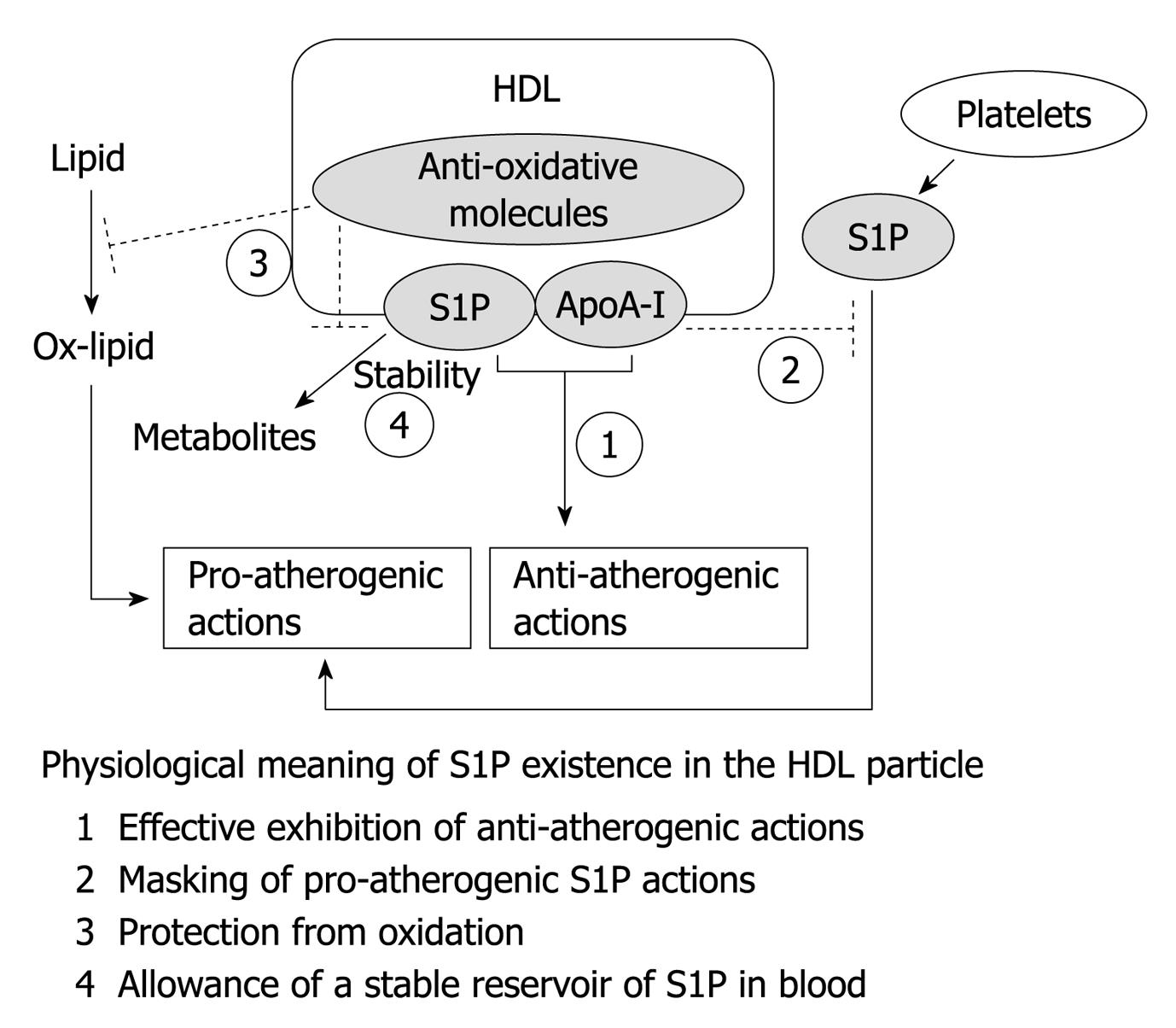Copyright
©2010 Baishideng Publishing Group Co.
World J Biol Chem. Nov 26, 2010; 1(11): 327-337
Published online Nov 26, 2010. doi: 10.4331/wjbc.v1.i11.327
Published online Nov 26, 2010. doi: 10.4331/wjbc.v1.i11.327
Figure 1 Reverse cholesterol transport and roles of high-density lipoprotein-associated molecules in cholesterol metabolism-independent cellular activities.
A: Scheme of simplified reverse cholesterol transport, in which lipid-free apolipoprotein (apo)A-I accelerates the efflux of excess cholesterol from the peripheral tissue through ATP-binding cassette transporter A1 (ABCA1), thereby forming pre-b-high-density lipoprotein (HDL). As a consequence of remodeling with enzymes relevant to the lipoprotein metabolism, such as lecithin:cholesterol acyltransferase and cholesteryl ester transfer protein, the pre-b discoidal HDL grows and becomes heterogeneous mature spherical HDL, with a different size and composition. Finally, mature HDL supplies cholesterol to the liver through scavenger receptor class B type I (SR-BI), which results in the formation of bile acid; B: Heterogeneous products formed during the remodeling of HDL can be classified for convenience into three groups, i.e. lipid-free apoA-I, pre-β-HDL, and mature spherical HDL. These molecules stimulate endothelial cells (ECs) and hepatocytes through several cell-surface receptors (or transporters), including ABCA1, F1-ATPase, SR-BI, and sphingosine 1-phosphate (S1P) receptors. MAPK: Mitogen-activated protein kinase.
Figure 2 Physiological meaning of sphingosine 1-phosphate in the high-density lipoprotein particle.
The possible advantages of sphingosine 1-phosphate (S1P) in the high-density lipoprotein (HDL) particle are summarized. In this model, the pro-atherogenic S1P is postulated to be released from platelets at the clot locus. It is not known whether plasma albumin-associated S1P, which might be released from erythrocytes under physiological conditions, is anti- or pro-atherogenic. See the text for details. ApoA-I: Apolipoprotein A-I.
- Citation: Sato K, Okajima F. Role of sphingosine 1-phosphate in anti-atherogenic actions of high-density lipoprotein. World J Biol Chem 2010; 1(11): 327-337
- URL: https://www.wjgnet.com/1949-8454/full/v1/i11/327.htm
- DOI: https://dx.doi.org/10.4331/wjbc.v1.i11.327










